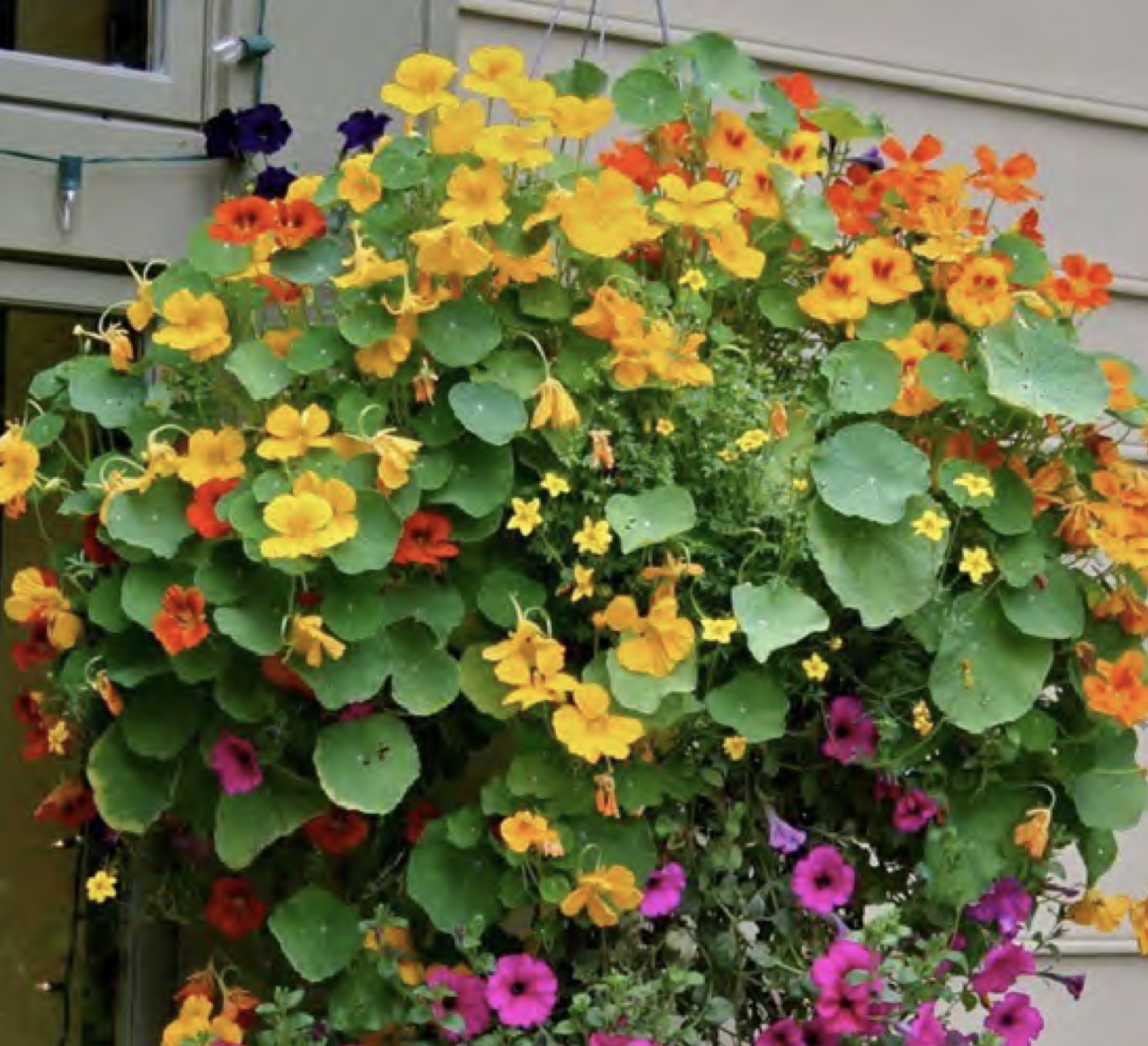
Plant of the Month: Nasturtium
By Becky Lowicki, Master Gardener
Looking for a way to keep those pesky aphids off your citrus trees? With a bounty of bold beautiful color that packs a beneficial punch – nasturtiums are an excellent companion plant noted for their ability to repel the harmful winged pests.
As a double bonus, these sunny standouts are also often paired with vegetable gardens as a weed suppressor and are known to be an easy to grow annual or short-lived perennial, perfect for fall.
Tropical Treats
In the Tropaeolum family, nasturtium originates from South America, with versatility in varieties ranging from freestanding dwarf for in-ground planting to trailing for hanging baskets to climbers for low trellises.
Its sunny orange, yellow and red blooms are accented by round disc-shaped, smooth foliage that is indeed edible, providing a citrus-colored buffet in any landscape.
With peppery-tasting leaves similar to watercress, nasturtium provides a ready option in salads or as a floral garnish, and the seed pods may also be pickled like capers. As with any vegetable planting, you should avoid using pesticides on or near the plants and its seeds are toxic and should not be eaten.
Pairing Partners
Noted as a top companion plant for orange trees, its fragrant allure attracts bees, butterflies and other pollinators – a triple trilogy of goodness as a partner for citrus, vegetables or simply for its vibrant beauty.
Tops of the leaves are red, while the underside is yellow-green, making long-lasting colors for use as a landscape or garden component.
Nasturtium Care
Sunny disposition
Likes full sun 6-8 hours daily, note that extreme heat may brown leaves; can tolerate some shade (3-6 hours of daylight) but less light will repress blooms.
Soil simplicity
Does well in relatively infertile soil, neutral pH (6-8) with good drainage. Avoid fertilizing which results in abundant greenery, but less blooms.
Water please
Moderate moisture is appreciated with a preference for weekly watering or more if soil dries quickly. Will survive moderate drought with diminished blooms and spindly foliage.
USDA Growing zones: 9-11
Survives a light frost but not a cold freeze. Struggles with extremely dry or extensively humid conditions.
Source: Harris County Master Gardeners Urban Dirt Newsletter (October 2022 Edition)
About Urban Dirt
Each month, Harris County Master Gardeners publishes an informative, resourceful newsletter entitled "Urban Dirt". This article was derived from the October 2022 edition. To read the October 2022 edition of this newsletter, click the button below.








